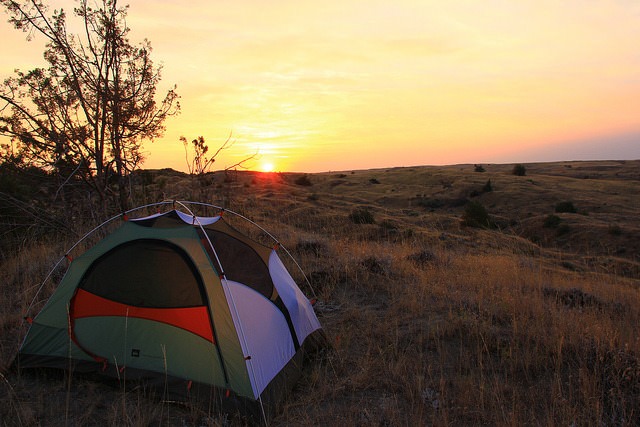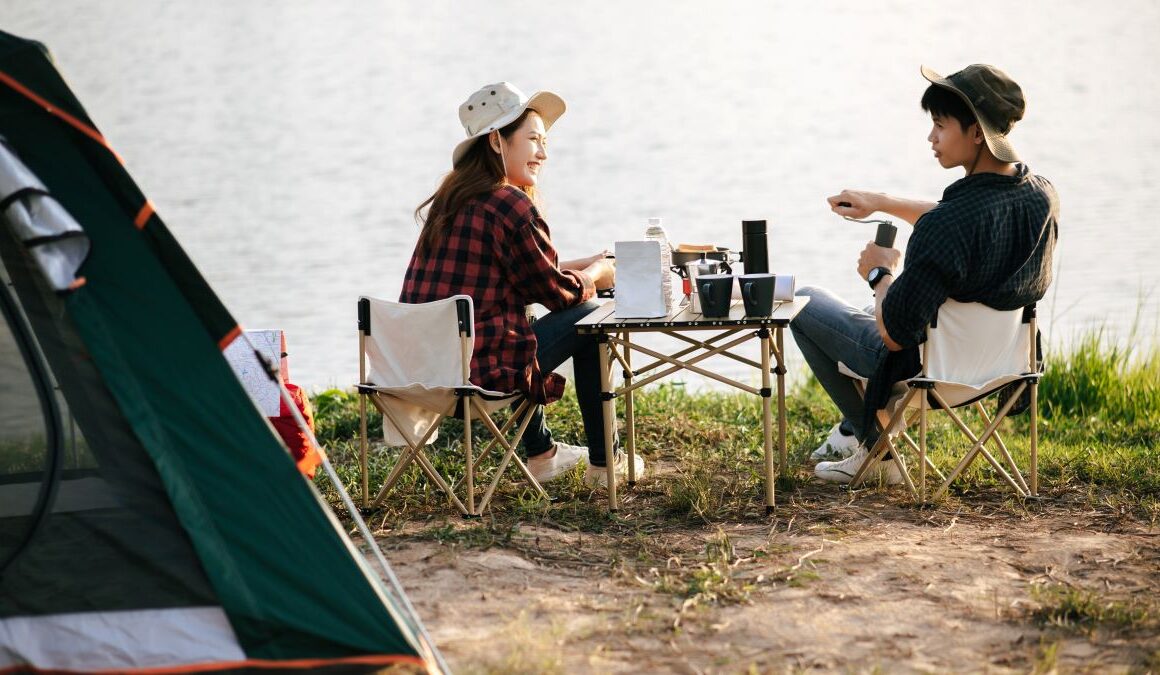Don’t Leave Home Without This Green Camping Gear
If you spend any time camping in nature, chances are you’re going to be passionate about protecting it. While camping isn’t necessarily a high carbon footprint activity, there are always ways to minimize your environmental impact when planning a weekend or a week of trailblazing. Check out these green camping gear options before you head out.
This article contains affiliate links. If you purchase an item through one of these links, we receive a small commission that helps fund our Recycling Directory.
Charging Your Devices
Even if you’re camping to get away from it all, sometimes you want to stay in touch — just a little bit. A little wattage can be a good thing if you need to recharge your phone or GPS navigation systems or play some tunes in the tent at night. Fortunately, the power of the sun can create effective electrical charging stations for the devices you bring along.
You can string up portable solar panels at your campsite or attach them to your backpack to harness the power of the sun. Also, solar-powered backpacks store up energy as you’re trekking during the day, for use at night.
Not a sunny day? Don’t worry. Start a campfire to charge up your mobile phone. The BioLite CampStove is a small self-contained campfire that can multitask — cooking dinner while also charging your batteries. Using wood inside its canister for a smokeless campfire, an attached system generates electricity from the heat to charge small appliances.
Light Up the Night
Lights inside your tent are nice to have, but no one wants to lug around a heavy lantern? The LuminAID Solar Light not only recharges with solar power, but it’s an inflatable pouch that folds flat when not in use, minimizing space in your backpack. Or try a hat with a solar-powered headlamp built-in, like the POWERCAP Solar Headlamp. It protects your eyes from glare by day and uses stored-up solar power to light your way at night.

Hydrate
Potable water is another major source of concern when out in the wilderness. If you’re headed to a campground with a water supply, just bring some sturdy food-grade water containers pre-filled with water at your house. You’ll have your emergency water supply if you need it during the trip and you can refill your containers at the campground.
But if you’re wilderness camping, you’ll need is a filtration system that can turn nearby water, such as from a stream, into safe water to drink. The LifeStraw Flex‘s membrane microfilter lasts up to 500 gallons and protects against bacteria, parasites, microplastics, heavy metals, and more. The LifeStraw personal water filter can provide up to 1,000 gallons of safe drinking water.
Eat Up
Can’t miss your morning coffee? The 4Patriots Sun Kettle is a solar-powered kettle and thermos with a 16.9 fluid-ounce capacity. Fill it, open its reflective panels, and set it in the sun, and it will harness energy to bring liquids to a boil in approximately 45 minutes.
Ready to fuel your body after a hard day of activity? The Outdoor Herbivore creates vegetarian and vegan dried meals made with mostly U.S.-grown and organic ingredients, such as Basil Walnut Penne and Bear-ry Patch Cobbler. Many are no-cook options. But if you’re up for cooking, don’t forget your solar cooker and recipes.
Protection
Even though you might love everything about the outdoors, chances are you don’t love the biting insects. The jury is still out on whether or not DEET-based sprays are worth the exposure to the chemical but there are plenty DEET-free insect repellants if you’d rather avoid it. You can even make your own nontoxic, natural bug spray.
Originally published on June 30, 2015, this article was updated in July 2022.


